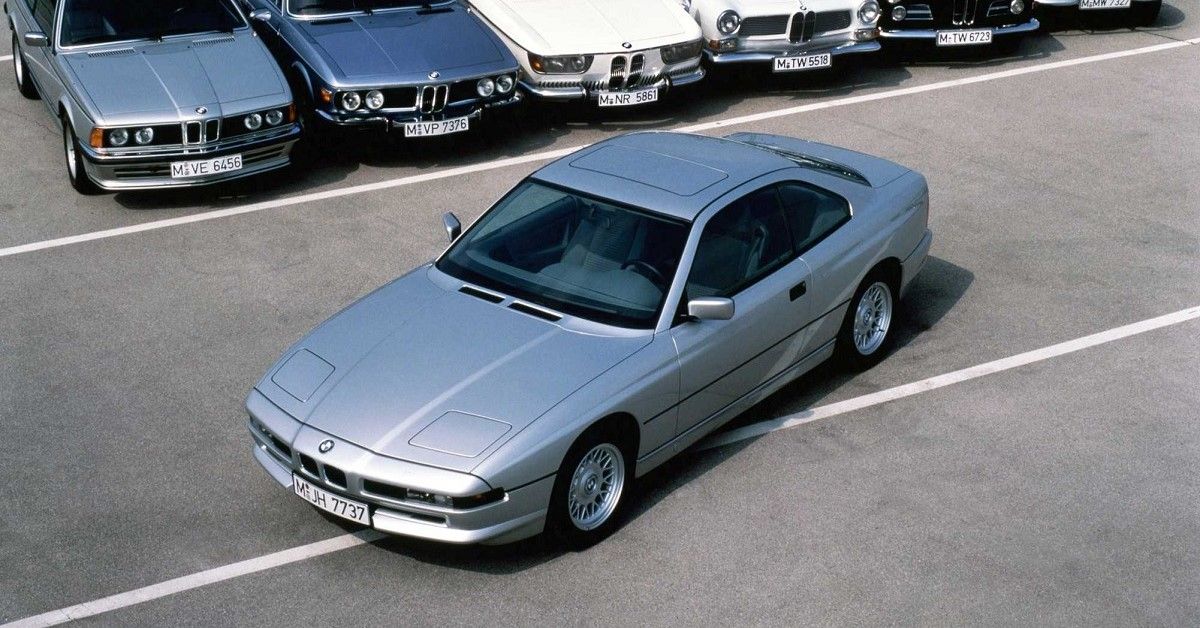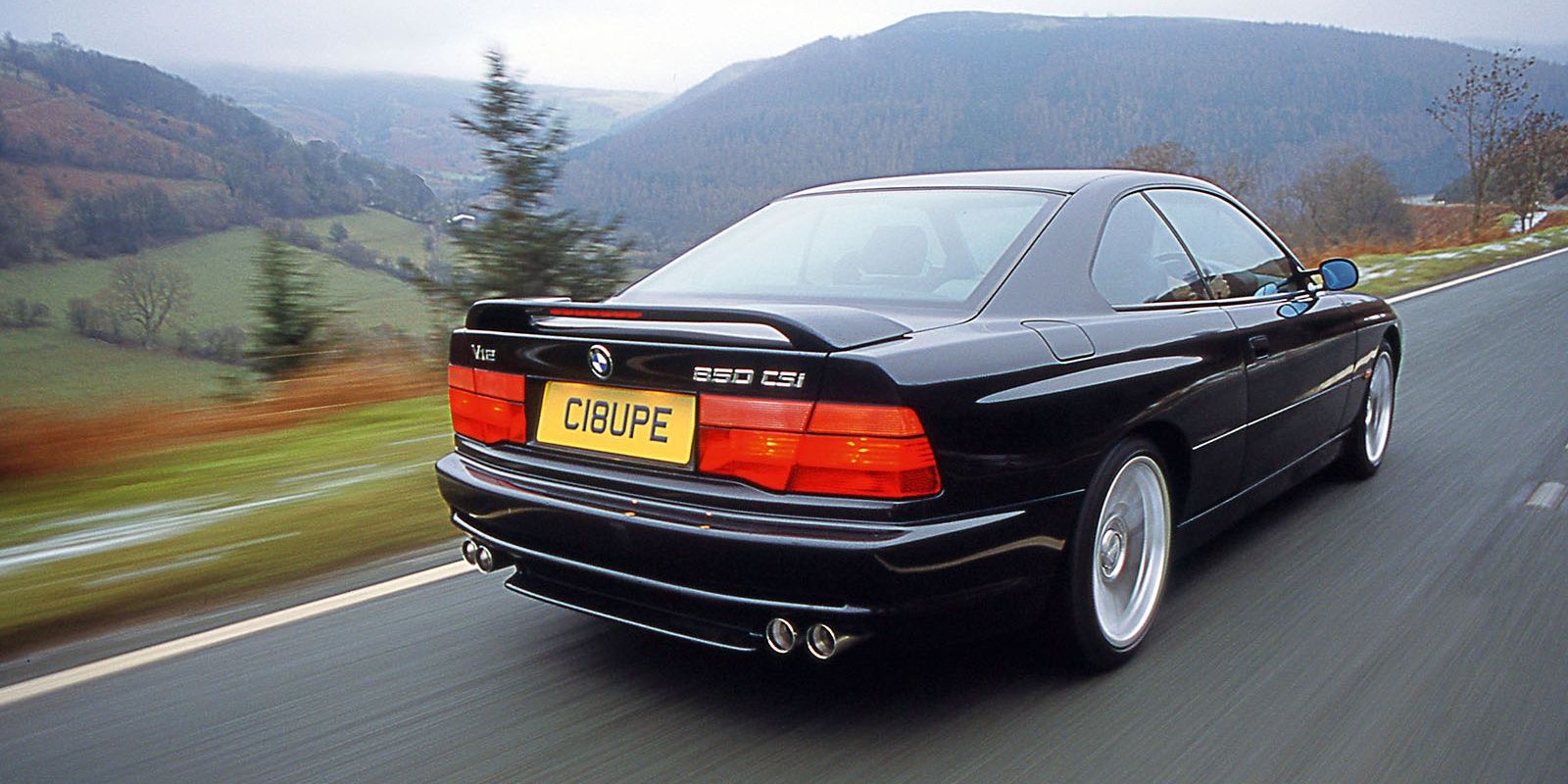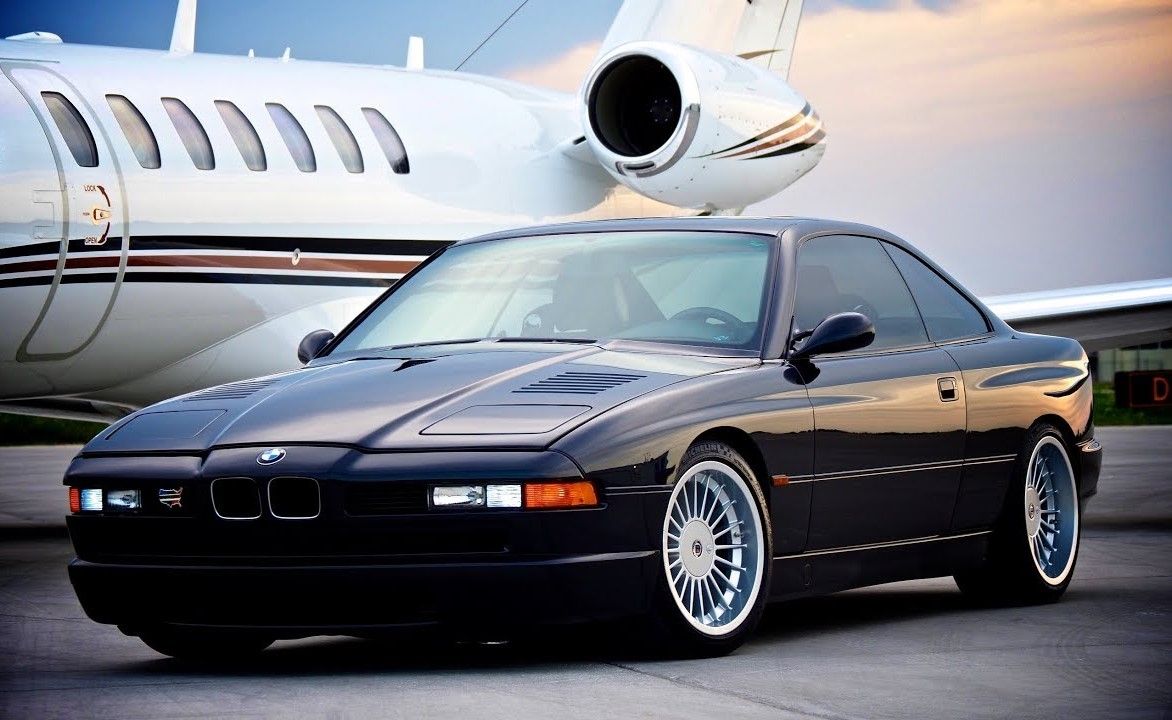Looking back on them from our vantage point here in the future, the automotive days of the 90s were exciting, and we were spoiled with choice.
At the time, we had no idea that in just three decades from 1990 we would have cars that run on batteries while offering amazing performance and having a range of 200-300 miles.
But back then, although we were still aware of the climate’s problems and pollution was still inherent in everyday life and endemic to cities; we were fully in gasoline mode.
We put our efforts into something that is still commendable today – going fast.
In that decade, we would see the Ferrari F355, 360 Modena, 456, and F50.
We would also see for the first time, the McLaren F1, the Lotus Carlton, the Bugatti EB110, the Lister Storm, and this: the BMW 8-Series.
The BMW E31 8-Series Was A Supercar From The Best Decade
Designed as the flagship to sit atop the pole in BMW’s range, the 8-Series was, at least from the outside, a supercar.
Wide tires, sleek hood with pop-up headlights and a coupe form gave it a Ferrari silhouette even though this was meant to be a grand tourer – to expand the range into new, faster, and more expensive territory.
It was hailed by the German automaker as innovative with its electronic systems, low drag coefficient, modern suspension, and refined nature.
However, it didn’t sell well, a lot of people wouldn’t swallow the idea of a $150,000 grand tourer with high fuel consumption that was neither a Porsche 911 Turbo nor an efficient sedan, in a time of financial uncertainty during a recession.
Luckily for us, some people bought them and nowadays, although they are increasing in value, prices aren’t yet on the extreme side of the spectrum.
Cars have moved on in performance and technology, but the main draw of the 8-Series now, as a weekend car or quirky commuter for people with spare cash, is the retro styling and of course the engines.
For $50,000 Dollars, You Can Own A Manual V12 And Retro Style
There were a range of engines, starting initially with the 4-liter V8 840Ci and the 5-liter V12 850i, although there were engine changes throughout the 90s.
The entry-level 840Ci’s 4-liter engine was upgraded to a 4.4-liter, going from 295 lb-ft of torque to 310 lb-ft but keeping the 280 hp peak.
For the 850i, it went from 5.0-liters to 5.4-liters, to eventually 5.6-liters (in the CSi). Power ranged from 296-375 hp and 335 lb-ft-406 lb-ft. This enabled a sub-6-second-to-60 mph time, which wasn’t super car-fast but adequate.
In 1992, the 850CSi was the flagship 8-Series. It was the only model to feature that 5.6-liter with the highest power and torque outputs. It had almost everything updated, exterior tweaks for aerodynamic performance, uprated brakes, improved fuel injection technology and more.
Today, these cars really vary in price, one of the most expensive auctions recorded at Classic.com is an RM Sotheby’s in London which went for $237,000 (a sough-after CSi model) but many can be found on sites like Bring A Trailer for less than $10,000.
On Bring A Trailer, most 8-Series auction results are between $10,000 and $40,000 dollars.
Classics/AutoTrader have many listings, with the average BMW 8-Series falling at around $30,000, with the V12 option much more popular than the 4/4.4-liter V8 option.
Singling-out a middle of the road example, we like this updated 850Ci from 1997, the last year of sales for the US.
At around $32,000, it has an auto gearbox, but with 322 hp / 360 lb-ft and the 5.4-liter V12 under the hood - plus low miles at 77,000 - it would make a great quirky weekend car and an imperfect antidote to all the futuristic hybrids and EVs running about the roads today.



